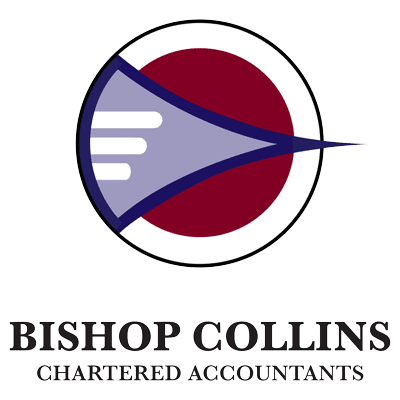Let’s put Goodwill into simple terms, then go technical for those thirsty for the detail.
Goodwill is the value in a business created over time because of its name, reputation, brand strength, and or the grand ideas it has developed. Goodwill is intangible, and it isn’t something that you can touch. If you wanted a fizzy, refreshing sweet drink, a bottle of XYZ Cola would arguably have less recognition than a bottle of Coca Cola. That powerful recognition is an intangible asset. If you were to purchase the Coca Cola business, a very substantial amount of the purchase price would be represented by that intangible asset. This extra amount paid is Goodwill. The stronger the intangible asset, the greater its effects on the business by way of increased revenue that asset creates directly, or it can create on other assets with which it is associated.
Specifically, Goodwill is the part of the purchase price that is higher than the sum of the net market value of all assets purchased in the acquisition, less the fair market value of the liabilities included in the purchase.
The value of a business’s brand/s is not the only influence on the determination of Goodwill. The following additional areas will influence why Goodwill exists in a business and the value placed on it:
- The customer base – Think Facebook
- Customer interaction and engagement – Think Amazon
- Staff/employee expertise – Think Space X, a highly technical field
- Location, location, location. – Think Pitt Street Mall for a high-end retailer
- Proprietary technology – Think Intel Chips
- Reputation – Think Harvard University
- Operating procedures/protocols – Think McDonald’s
Goodwill is essential to accountants to recognise the value assigned to the future earning capacity of the business resulting from Goodwill. This must be recognised in the accounts of the company to reflect the true value.
NOW LET’S GET TECHNICAL
How is Goodwill recorded?
We record Goodwill as an intangible asset classified as Non-Current assets on the balance sheet of the acquiring business. Under Generally Accepted Accounting Principles (GAAP) and International Financial Reporting Standards (IFRS), it is a requirement that a company evaluates the value of Goodwill on their financial statements at least once a year and record any impairments.¹
Complexities in Calculating Goodwill
The process for calculating Goodwill is straightforward in principle but can be quite complex in practice. Remember Goodwill is the purchase price less the difference between the fair market value of assets and the fair market value of liabilities.
Fair market value for liabilities is pretty straight forward excluding Provisions or Contingent Liabilities. There are, however, competing approaches among accountants to calculate Goodwill because of the many ways to determine the fair market value of Assets. This is more so in an entity that is not a publicly-traded company. If we were to get 7 registered business valuers to perform a valuation on a business asset involved in an acquisition, we could get 7 different results. We would expect that they would not be too far from each other. That is a topic to discuss at another time. Goodwill is a workaround for accountants and is necessary because acquisitions often involve estimates of future earnings and other unknown considerations at the time of the acquisition.
The complexity comes with determining the Fair Market Value of assets not only in the company being acquired but also in any previous businesses that the company acquired and the goodwill calculations made previously. For example, is the Goodwill of that previously purchased business still worth the value reflected in the company’s balance sheet, or has the value decreased?
Impairments
When the market value of an asset drops below its historical cost, we call this an impairment. This can occur due to an adverse event such as increased competition, change in market forces or consumer habits or technology. Think of Newspaper mastheads; they are considerably less than they used to be before social media. To assess whether an impairment is needed, companies usually perform an impairment test on intangible assets.
The two methods for testing impairments are the market comparison and the income approach. Using the market comparison, the assets of similar companies operating in the same industry are analysed. With the income approach, estimated future cash flow is discounted to the present value.
If a company’s acquired net assets fall below the historical value, the company has overstated the amount of Goodwill. Therefore, it must correct the balance sheet by doing a write-down on the asset’s value to record the impairment. The impairment expense is then calculated as the difference between the current market value and the asset’s purchase price.
The impairment results in a decrease in the Goodwill account on the balance sheet. The expense is then recognised as a loss on the income statement, which reduces the net income for the year. In turn, EPS (Earnings Per Share) and the company’s stock price are also negatively affected.
The FASB (Financial Accounting Standards Board), which sets standards for GAAP rules, is considering a change to how goodwill impairment is calculated. Due to the subjectivity of Goodwill impairment and the cost of testing impairment, FASB is considering reverting to an older method called “Goodwill amortisation“. As a result, the value of Goodwill is slowly reduced annually, like the depreciation of a Car. The problem with this approach is that Goodwill can appreciate over time. Think back to Reputation and Harvard University, arguably the longer the institution continues, the stronger the goodwill asset of reputation.
We accountants like things Black or White in business as it gives certainty; however, sometimes we must be flexible and consider the shades of grey!!!!
Goodwill vs. Other Intangibles
Goodwill and other intangible assets are not the same. For example, Goodwill is a premium paid over fair value during a transaction and cannot be bought or sold independently. At the same time, other intangible assets include the likes of licenses and can be purchased or sold separately. In addition, Goodwill arguably has an indefinite life, while other intangibles have a finite useful life.
Are there limitations to using Goodwill?
Goodwill is difficult to put value to, and we can get a negative Goodwill when an acquirer purchases a company for less than its current market value. This usually happens when the target is under stress to sell. This transaction will result in a gain from the acquiring entity, which will be entered into the Profit & Loss for the transaction year.
There is also the risk that a previously successful company could face insolvency. When this happens, investors deduct Goodwill from their determinations of residual equity. This is because, at the point of insolvency, the Goodwill the company previously enjoyed may not have a resale value, but not always.
KEY TAKEAWAYS
- Goodwill is an intangible asset. However, not all intangibles are Goodwill.
- Goodwill is different from most other intangible assets, having an indefinite life, while most other intangible assets have a finite useful life such as Licences.
- Goodwill is calculated by taking the purchase price of a company and subtracting the difference between the market value of the assets and liabilities.
- Public Companies are required to review the value of Goodwill on their financial statements at least once a year and record any impairments.





